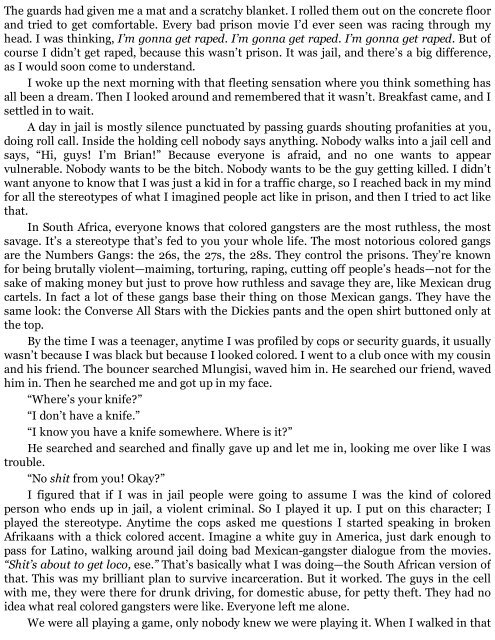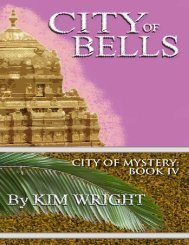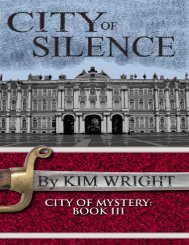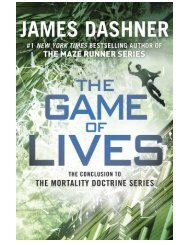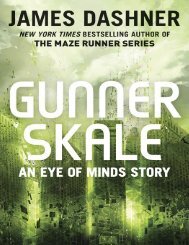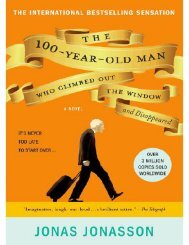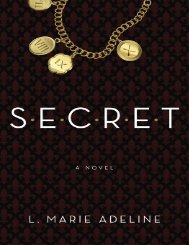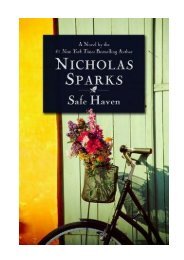You also want an ePaper? Increase the reach of your titles
YUMPU automatically turns print PDFs into web optimized ePapers that Google loves.
The guards had given me a mat and a scratchy blanket. I rolled them out on the concrete floor<br />
and tried to get comfortable. Every bad prison movie I’d ever seen was racing through my<br />
head. I was thinking, I’m gonna get raped. I’m gonna get raped. I’m gonna get raped. But of<br />
course I didn’t get raped, because this wasn’t prison. It was jail, and there’s a big difference,<br />
as I would soon come to understand.<br />
I woke up the next morning with that fleeting sensation where you think something has<br />
all been a dream. Then I looked around and remembered that it wasn’t. Breakfast came, and I<br />
settled in to wait.<br />
A day in jail is mostly silence punctuated by passing guards shouting profanities at you,<br />
doing roll call. Inside the holding cell nobody says anything. Nobody walks into a jail cell and<br />
says, “Hi, guys! I’m Brian!” Because everyone is afraid, and no one wants to appear<br />
vulnerable. Nobody wants to be the bitch. Nobody wants to be the guy getting killed. I didn’t<br />
want anyone to know that I was just a kid in for a traffic charge, so I reached back in my mind<br />
for all the stereotypes of what I imagined people act like in prison, and then I tried to act like<br />
that.<br />
In South Africa, everyone knows that colored gangsters are the most ruthless, the most<br />
savage. It’s a stereotype that’s fed to you your whole life. The most notorious colored gangs<br />
are the Numbers Gangs: the 26s, the 27s, the 28s. They control the prisons. They’re known<br />
for being brutally violent—maiming, torturing, raping, cutting off people’s heads—not for the<br />
sake of making money but just to prove how ruthless and savage they are, like Mexican drug<br />
cartels. In fact a lot of these gangs base their thing on those Mexican gangs. They have the<br />
same look: the Converse All Stars with the Dickies pants and the open shirt buttoned only at<br />
the top.<br />
By the time I was a teenager, anytime I was profiled by cops or security guards, it usually<br />
wasn’t because I was black but because I looked colored. I went to a club once with my cousin<br />
and his friend. The bouncer searched Mlungisi, waved him in. He searched our friend, waved<br />
him in. Then he searched me and got up in my face.<br />
“Where’s your knife?”<br />
“I don’t have a knife.”<br />
“I know you have a knife somewhere. Where is it?”<br />
He searched and searched and finally gave up and let me in, looking me over like I was<br />
trouble.<br />
“No shit from you! Okay?”<br />
I figured that if I was in jail people were going to assume I was the kind of colored<br />
person who ends up in jail, a violent criminal. So I played it up. I put on this character; I<br />
played the stereotype. Anytime the cops asked me questions I started speaking in broken<br />
Afrikaans with a thick colored accent. Imagine a white guy in America, just dark enough to<br />
pass for Latino, walking around jail doing bad Mexican-gangster dialogue from the movies.<br />
“Shit’s about to get loco, ese.” That’s basically what I was doing—the South African version of<br />
that. This was my brilliant plan to survive incarceration. But it worked. The guys in the cell<br />
with me, they were there for drunk driving, for domestic abuse, for petty theft. They had no<br />
idea what real colored gangsters were like. Everyone left me alone.<br />
We were all playing a game, only nobody knew we were playing it. When I walked in that


